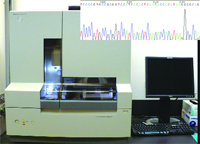
Features
Crop Protection
Inputs
Greenhouse Grower Notes: Controlling Q Biotype whiteflies
March 14, 2008 By Graeme Murphy Tracy Hueppelsheuser and Lisa Wegener
Some pesticides remain effective, but potential for resistance development is high
Probably by now, most poinsettia growers have heard of ‘Q biotype,’ a new strain of whitefly that has been in the news for several years. Q biotype belongs to a whitefly species called Bemisia tabaci. Another strain of this same species is called “B biotype” (also known as silverleaf whitefly or sweetpotato whitefly) and has been a major whitefly pest on poinsettia since the late 1980s. Q biotype has been present in southern Europe and the Middle East for a number of years where it has been a major pest on greenhouse vegetables. It is resistant to many commonly used insecticides, has a wide host range and can transmit a number of devastating plant viruses of greenhouse vegetable crops. In late 2004, it was discovered on poinsettias in Arizona and in the following year (2005) was identified in more than 20 states, often on poinsettia. The 2006 poinsettia year was a quiet one for whitefly generally and there were few reports of Q biotype.
 |
| The DNA analyzer at BCMAL was used to obtain genetic sequence information from Bemisia samples. Photo courtesy BCMAL |
In 2007, it was clear fairly early in the poinsettia season that some growers were going to have whitefly problems. There was evidence (even as the cuttings were unpacked in some cases) that whitefly were arriving with the cuttings. The whitefly were Bemisia tabaci, however it was unknown whether they were B or Q biotype. These early infestations were sporadic in nature. In some crops it was hard to find any evidence of whitefly, while in others, whitefly were easy to find, with some varieties obviously more heavily infested than others.
In the final analysis, the season was by no means disastrous in terms of whitefly, but growers did have to give some thought to their control and it was relatively easy to find whiteflies in November. At about this time in both British Columbia and Ontario, we decided to sample whiteflies from greenhouse crops and test them for biotype. The Plant Diagnostic Lab of the B.C. Ministry of Agriculture and Lands had recently gained access to a new molecular (DNA) diagnostic test from an ARS-USDA lab.
Whiteflies were collected from 10 greenhouses in Ontario and sent to B.C. for testing. Molecular analysis revealed the presence of Q biotype in eight of the 10 greenhouses sampled. In B.C., whiteflies were collected from two poinsettia greenhouses and both were positive for Q biotype. The findings are not surprising. Indeed it would have been unusual had we not found Q. There were already reports from the U.S. that Q biotype had been found in poinsettia in a number of states earlier in the season, and since Canada gets its cuttings from the same sources as most U.S. growers, the results were expected.
 |
| Tracy Hueppelsheuser (left) and Lisa Wegener in the BCMAL diagnostic lab. Photo courtesy BCMAL |
The question that most growers are probably interested in now is what should we do about Q biotype? For a start, bring in propagation stock that is as clean as possible. Also, we need to consider what pesticides Q is resistant to. Research
conducted in the U.S. a few years ago indicated that Q biotype is resistant to the neonicotinoids (Intercept, Tristar), and the insect growth regulator Distance (which was only registered in Canada in early 2007) and Talus (which is not registered in Canada).
So what products does that leave us with? Dyno-Mite, based on the experiences of Ontario growers, still works well. Forbid (which was registered in mid-2007) is apparently still effective and is recommended in the U.S. for control of Q. A few growers used it in Ontario in 2007 and it appeared to work quite well. Other registered products such as Enstar II may still be useful although there isn’t much data available to confirm this. The concern with Q is that it will develop resistance to these newer pesticides, especially if too much reliance is placed on them. For products not yet registered in Canada, resistance may develop in propagating countries before we ever get a chance to use them.
The other option open to growers is biological control, which is equally effective against B and Q biotypes. Trials in commercial greenhouses in Ontario in the last few years have demonstrated that biocontrol can be very effective using the parasitoid, Eretmocerus mundus. Other parasitoids such as Encarsia Formosa and Eretmocerus eremicus can also be useful in controlling greenhouse whitefly if present in the crop. In 2006, nine out of 12 greenhouses using biocontrol grew the crop successfully without insecticides. In 2007, the success rate was eight out of 11. In greenhouses where the cuttings came in with few or no whiteflies, the success rate was even higher.
 |
| Graeme Murphy, OMAFRA |
Q biotype is probably here to stay. At the moment it is likely only on poinsettia, although it has been found on other ornamental crops in the U.S. and likely we will see the same in Canada in the future. We still have some pesticides that are effective against this pest, but the potential for resistance development is high. A biological control program is an excellent alternative control strategy that has been successfully demonstrated in Canadian greenhouses, and we expect to see increasing use of this tool in the coming years.
Graeme Murphy is the greenhouse floriculture IPM specialist with the Ontario Ministry of Agriculture, Food and Rural Affairs at Vineland.
Tracy Hueppelsheuser is an entomologist with the British Columbia Ministry of Agriculture and Lands. Lisa Wegener is a research pathology assistant with the British Columbia Ministry of Agriculture and Lands.
Print this page